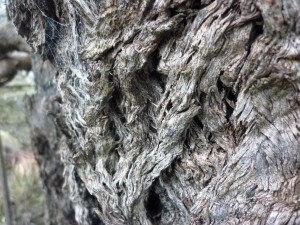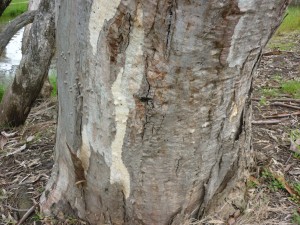pH, salinity and the trees – local
What do you know about your local water place?
That was the basic question behind the unique environmental project ‘pH, salinity and the trees of the Lower Wimmera‘ which began in National Science Week 2011, with support funding from the Science Teachers Association of Victoria and concluded in National Water Week with the regional view. This project took five small schools out into their nearest water place to explore trees and water quality as part of the two 2011 International Years : Forests and Chemistry, repsectively.
Do you know the difference between gum and box trees by their bark?
This was one key learning for the children in this program.
Box Trees are a group of Eucalyptus that have a rough bark. This is Black Box – Eucalyptus largiflorens – which is very thick, fibrous and rough.
Gum Trees are a group of Eucalyptus that have smooth bark. This is River Red Gum – Eucalyptus camaldulensis- which is a very smooth bark, of creams to greys in colour and comes off in long strips.
Once you can recognise the River Red Gums and Black Boxes, then you know a bit about how often to expect flooding : the land River Red Gums were on would flood much more frequently than the land the Black Boxes were on. So you would not be surprised at a flood over Black Box land that had been dry for decades- like last summer!
Why do trees matter? and, How do you value them?
The Perth Zoo Global Forests photo album website showcases photos and statements of the value of trees from around the world – a great teaching aid! Selected photos can be used to introduce the children to how trees matter. This is my lesson plan for this – Trees-matter3
Each child wrote out how they valued these trees. These were collated into group statements and put with a group photo of the trees into the entry to the Perth Zoo Global Forests photo album.
What is the water like here about 7 months after the flood?
All the sites had had some flooding last summer.
The children learnt to:
collect the water safely without contaminating the sample
test for pH and salinity reliably
interpret their readings.
The readings were intended to go into the IYChemistry Global Water Experiment– but there were too many technical hitches. It’s still an interesting site to visit.
Return to review the types of trees and their values in this joint study or
move on to National Water Week – regional activities.
PS if you would like to read about this project in a media release form this is it ph-salinity-and-trees-REPORT



